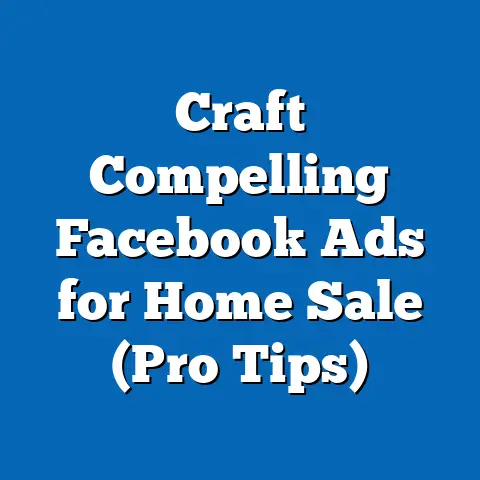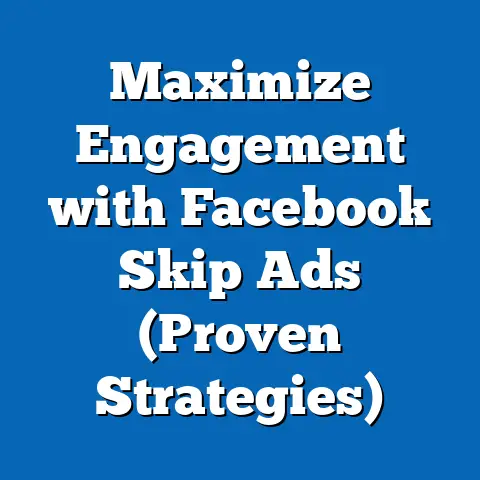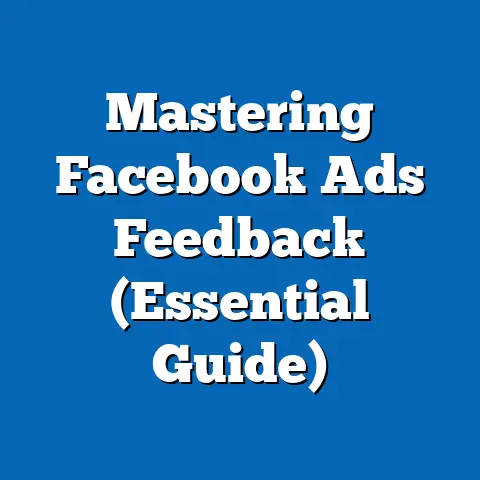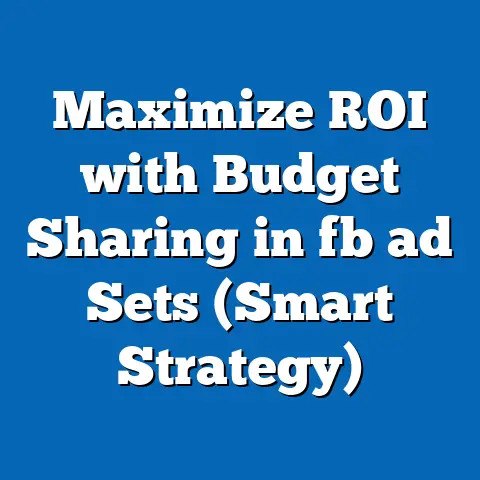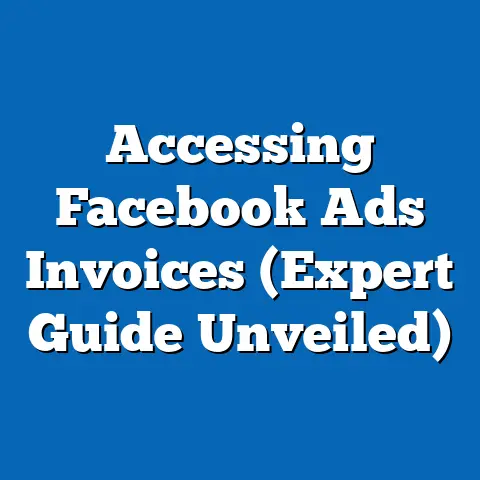Transform Facebook Ads with Virtual Cards (Game-Changer)
Imagine this: you’re a digital marketer, and like many others, you’ve poured your heart, soul, and a significant chunk of your budget into Facebook ads. You’ve meticulously crafted your targeting, A/B tested countless ad creatives, and religiously monitored your metrics. Yet, despite all your efforts, the results are… underwhelming. The ROI is barely breaking even, your ad spend feels like a leaky faucet, and you’re constantly battling ad fatigue. The pressure is mounting, and the frustration is real.
I’ve been there. I remember one campaign in particular for a local e-commerce business. We were launching a new line of eco-friendly products, and Facebook ads were supposed to be our golden ticket. We invested heavily, targeting specific demographics interested in sustainable living. But the click-through rates were low, and the conversion rates were even lower. It felt like we were throwing money into a black hole.
What if there was a way to not just change the game, but to redefine it entirely? What if you could gain granular control over your ad spend, eliminate the risk of overspending, and unlock deeper insights into your campaign performance? What if you could boost your ROI and ensure your advertising budget is working as hard as you are?
1. Understanding Facebook Ads
The Basics of Facebook Advertising
Facebook advertising has become an indispensable tool for businesses of all sizes. With billions of active users, Facebook offers an unparalleled opportunity to reach a vast and diverse audience. The platform’s sophisticated targeting capabilities allow advertisers to pinpoint specific demographics, interests, behaviors, and even connections, ensuring that ads are seen by the most relevant users.
Facebook offers a variety of ad formats, each designed to achieve different marketing objectives. These include:
- Image Ads: Simple yet effective, image ads are ideal for showcasing products or services with compelling visuals.
- Video Ads: Captivating and engaging, video ads can tell a story, demonstrate a product, or capture attention in a dynamic way.
- Carousel Ads: Allowing users to swipe through multiple images or videos, carousel ads are perfect for showcasing a range of products or highlighting different features.
- Collection Ads: Designed for e-commerce businesses, collection ads display a catalog of products, making it easy for users to browse and purchase directly from the ad.
- Lead Ads: Streamlining the lead generation process, lead ads allow users to submit their contact information without leaving the Facebook platform.
The relevance of Facebook ads in today’s digital marketing landscape cannot be overstated. In 2023, Facebook’s advertising revenue reached a staggering $116.6 billion, underscoring its dominance in the digital advertising space. However, with great power comes great responsibility. To succeed with Facebook ads, advertisers must navigate a complex ecosystem of targeting options, bidding strategies, and performance metrics.
Common Challenges
While Facebook advertising offers immense potential, it also presents several challenges that can hinder success. One of the most common hurdles is budget constraints. Many small businesses and startups struggle to compete with larger companies that have deeper pockets. Managing ad spend effectively and maximizing ROI is crucial, but often difficult to achieve.
Another significant challenge is ad fatigue. Over time, users become desensitized to ads, leading to decreased engagement and performance. Overcoming ad fatigue requires constant innovation, creative ad design, and strategic audience targeting.
Audience targeting issues also plague many advertisers. Selecting the right audience is essential for ad success, but it can be a complex process. Incorrect targeting can lead to wasted ad spend and poor results.
The complexities of ad performance analytics further complicate matters. Interpreting metrics, identifying trends, and making data-driven decisions require a deep understanding of Facebook’s advertising platform. Many advertisers struggle to make sense of the data and optimize their campaigns accordingly.
Let me share another personal experience. I was working with a client who ran a local fitness studio. They were struggling to attract new members through Facebook ads. Their initial strategy involved broad targeting and generic ad creatives. As a result, their ads were reaching a wide audience, but few were converting into paying customers.
After analyzing their ad performance, I realized that their targeting was too broad. We refined their audience by focusing on specific demographics, interests, and behaviors related to fitness and wellness. We also created more compelling ad creatives that highlighted the unique benefits of their studio. The results were dramatic. Their click-through rates increased, their conversion rates soared, and they started acquiring new members at a fraction of the cost.
Introduction to Virtual Cards
Amidst these challenges, a powerful solution is emerging: virtual cards. Virtual cards are digital payment cards that offer a secure and flexible way to manage online transactions. Unlike traditional credit cards, virtual cards are not physical cards. Instead, they are generated electronically and can be used for specific purposes, such as online advertising.
Virtual cards offer several key benefits for Facebook advertisers:
- Enhanced Security: Virtual cards protect against fraud by providing a unique card number for each transaction.
- Budget Control: Marketers can set spending limits on virtual cards, preventing overspending and ensuring campaigns stay within budget.
- Detailed Tracking: Virtual cards provide clear insights into ad spending, making it easier to track ROI and optimize campaigns.
- Flexibility: Virtual cards can be easily created and managed, allowing marketers to quickly adapt to changing campaign needs.
In the following sections, I will delve deeper into the mechanics of virtual cards and explore how they can be seamlessly integrated with Facebook ads to unlock a new level of control, security, and performance.
Key Takeaway: Facebook advertising offers immense potential but also presents several challenges. Virtual cards provide a powerful solution for overcoming these challenges by enhancing security, improving budget control, and providing detailed tracking.
2. The Mechanics of Virtual Cards
What Are Virtual Cards?
Virtual cards, also known as digital cards or virtual credit cards, are essentially digital representations of traditional credit or debit cards. However, unlike physical cards, virtual cards exist only in digital form and are generated electronically. They are designed to provide a secure and convenient way to make online purchases, especially in situations where you might be hesitant to use your primary credit card.
Here are some key features of virtual cards:
- Unique Card Numbers: Each virtual card has a unique card number, expiration date, and CVV code, just like a physical card.
- Spending Limits: You can set spending limits on virtual cards, restricting the amount that can be charged to the card.
- Expiration Dates: Virtual cards can be set to expire after a specific period or after a certain number of transactions.
- One-Time Use: Some virtual cards are designed for one-time use, providing an extra layer of security.
- Link to Existing Accounts: Virtual cards are typically linked to an existing bank account or credit card, from which funds are drawn.
The benefits of using virtual cards are numerous:
- Enhanced Security: Virtual cards protect your primary account information by providing a unique card number for each transaction. If a virtual card number is compromised, your primary account remains safe.
- Fraud Prevention: By setting spending limits and expiration dates, you can minimize the risk of unauthorized charges.
- Budget Control: Virtual cards make it easy to track and manage your spending, especially for online advertising campaigns.
- Convenience: Virtual cards can be generated and managed online, providing a quick and easy way to make secure purchases.
How Virtual Cards Work
The process of using virtual cards is straightforward:
- Generate a Virtual Card: Most banks and credit card companies offer virtual card services through their online portals or mobile apps. You can generate a virtual card with a few clicks, specifying the spending limit and expiration date.
- Link to Your Account: The virtual card is linked to your existing bank account or credit card. When you make a purchase using the virtual card, the funds are drawn from your linked account.
- Use for Online Transactions: You can use the virtual card number, expiration date, and CVV code to make online purchases, just like a physical card.
- Track and Manage Spending: You can track your spending on each virtual card through your bank’s online portal or mobile app. You can also adjust spending limits and expiration dates as needed.
- Deactivate the Card: Once you’re done using the virtual card, you can deactivate it to prevent further charges.
For example, let’s say you want to set up a Facebook ad campaign with a budget of $500. You can generate a virtual card with a spending limit of $500 and an expiration date that aligns with the duration of your campaign. You can then use this virtual card to pay for your Facebook ads. If your campaign exceeds the $500 budget, the virtual card will automatically decline further charges, preventing overspending.
Security Features
One of the primary advantages of virtual cards is their enhanced security features. Virtual cards offer several layers of protection against fraud and unauthorized charges:
- Unique Card Numbers: Each virtual card has a unique card number, expiration date, and CVV code, making it difficult for hackers to steal your primary account information.
- Spending Limits: You can set spending limits on virtual cards, restricting the amount that can be charged to the card. This prevents unauthorized charges from exceeding your budget.
- Expiration Dates: Virtual cards can be set to expire after a specific period or after a certain number of transactions. This limits the amount of time that a compromised card number can be used.
- One-Time Use: Some virtual cards are designed for one-time use, providing an extra layer of security. Once the card has been used for a single transaction, it is automatically deactivated.
- Easy to Freeze or Deactivate: If you suspect that a virtual card has been compromised, you can easily freeze or deactivate it through your bank’s online portal or mobile app. This prevents further unauthorized charges.
In contrast, traditional credit cards are more vulnerable to fraud. If your credit card number is stolen, hackers can make unauthorized purchases until you report the fraud to your bank. This can result in significant financial losses and a lengthy process of disputing charges.
I remember when one of my clients had their credit card information stolen and used for fraudulent online purchases. It was a nightmare. They had to cancel their credit card, dispute the charges, and wait for a new card to arrive. The entire process took several weeks and caused a significant disruption to their business.
With virtual cards, you can avoid this hassle. By using a unique card number for each transaction and setting spending limits and expiration dates, you can minimize the risk of fraud and protect your primary account information.
Key Takeaway: Virtual cards provide a secure and flexible way to manage online transactions. They offer enhanced security features, budget control, and convenience, making them an ideal payment method for Facebook advertisers.
3. The Integration of Virtual Cards with Facebook Ads
Seamless Payments
One of the most immediate benefits of using virtual cards with Facebook Ads is the streamlining of payment processes. Traditional payment methods often involve manual entry of credit card details, which can be time-consuming and prone to errors. Virtual cards, on the other hand, can be seamlessly integrated with Facebook Ads Manager, allowing for quicker and more efficient transactions.
Here’s how it works:
- Generate a Virtual Card: Create a virtual card with the desired spending limit and expiration date.
- Add the Card to Facebook Ads Manager: Enter the virtual card details (card number, expiration date, and CVV code) into your Facebook Ads Manager account.
- Set as Default Payment Method: Designate the virtual card as your default payment method for Facebook Ads.
- Run Your Campaigns: Facebook will automatically charge your virtual card for your ad spend.
The integration of virtual cards with Facebook Ads eliminates the need for manual payment processing, saving you time and effort. It also reduces the risk of errors, such as entering the wrong card number or expiration date.
Budget Management
Budget management is a critical aspect of Facebook advertising. Setting a budget is essential for controlling your ad spend and maximizing ROI. However, traditional payment methods can make it difficult to track and manage your budget effectively.
Virtual cards provide a powerful solution for budget management. By setting spending limits on virtual cards, you can ensure that your campaigns stay within budget. You can also create multiple virtual cards with different spending limits for different campaigns or ad sets.
Here’s how you can use virtual cards for budget management:
- Create a Virtual Card for Each Campaign: Generate a virtual card for each Facebook ad campaign, with a spending limit that matches your budget for that campaign.
- Monitor Spending: Track your spending on each virtual card through your bank’s online portal or mobile app.
- Adjust Spending Limits: If you need to increase or decrease your budget for a particular campaign, you can easily adjust the spending limit on the corresponding virtual card.
- Prevent Overspending: If your campaign exceeds the spending limit on the virtual card, Facebook will automatically pause the campaign, preventing overspending.
For example, let’s say you’re running three different Facebook ad campaigns: one for brand awareness, one for lead generation, and one for e-commerce sales. You can create three separate virtual cards, each with a spending limit that matches the budget for each campaign. This allows you to track your spending on each campaign independently and prevent any one campaign from exceeding its budget.
Enhanced Tracking and Analytics
Tracking and analyzing your ad performance is essential for optimizing your Facebook ad campaigns. However, traditional payment methods can make it difficult to get a clear picture of your ad spending and ROI.
Virtual cards provide enhanced tracking and analytics capabilities. By using a unique virtual card for each campaign or ad set, you can easily track your spending and performance for each.
Here’s how you can use virtual cards for enhanced tracking and analytics:
- Create a Unique Virtual Card for Each Campaign or Ad Set: Generate a unique virtual card for each Facebook ad campaign or ad set.
- Track Spending: Monitor your spending on each virtual card through your bank’s online portal or mobile app.
- Analyze Performance: Correlate your spending on each virtual card with the performance metrics for the corresponding campaign or ad set.
- Optimize Campaigns: Use the data to identify which campaigns or ad sets are performing well and which are not. Adjust your strategies accordingly.
For example, let’s say you’re running two different ad sets within a Facebook ad campaign: one targeting a younger audience and one targeting an older audience. You can create two separate virtual cards, one for each ad set. By tracking your spending on each virtual card and analyzing the performance metrics for each ad set, you can determine which audience is more responsive to your ads. You can then allocate more of your budget to the ad set that is performing better, maximizing your ROI.
Case Studies
To illustrate the benefits of integrating virtual cards with Facebook Ads, let’s consider a few real-life examples:
- E-commerce Business: An e-commerce business used virtual cards to manage their Facebook ad spend for different product categories. By creating a separate virtual card for each product category, they were able to track their spending and ROI for each. This allowed them to identify which product categories were most profitable and allocate more of their budget to those categories.
- Marketing Agency: A marketing agency used virtual cards to manage their clients’ Facebook ad spend. By creating a separate virtual card for each client, they were able to track their spending and performance for each. This allowed them to provide their clients with detailed reports and justify their fees.
- Startup Company: A startup company used virtual cards to manage their Facebook ad spend while testing different ad creatives. By creating a separate virtual card for each ad creative, they were able to track their spending and performance for each. This allowed them to identify which ad creatives were most effective and focus their budget on those creatives.
These case studies demonstrate the power of virtual cards in transforming Facebook advertising. By providing enhanced security, budget control, and detailed tracking, virtual cards empower advertisers to take control of their ad spend and maximize their ROI.
Key Takeaway: Integrating virtual cards with Facebook Ads streamlines payment processes, improves budget management, and enhances tracking and analytics. This empowers advertisers to take control of their ad spend and maximize their ROI.
4. The Competitive Edge
Stand Out from the Crowd
In the crowded landscape of Facebook advertising, gaining a competitive edge is crucial for success. Using virtual cards can provide that edge by enabling more strategic budget allocation and risk management.
Traditional advertising methods often involve a blanket approach to budgeting, where a fixed amount is allocated to each campaign without considering its performance. This can lead to wasted ad spend and missed opportunities.
Virtual cards, on the other hand, allow for a more dynamic and data-driven approach to budgeting. By tracking your spending and performance for each campaign or ad set, you can identify which are performing well and which are not. You can then adjust your budget accordingly, allocating more funds to the campaigns that are generating the best results.
This level of granularity and control can give you a significant competitive advantage. You can optimize your ad spend in real-time, ensuring that every dollar is working as hard as possible.
Adaptability and Flexibility
The ability to adapt quickly to changing market conditions is essential for success in Facebook advertising. Trends can shift rapidly, and what works today may not work tomorrow.
Virtual cards provide the adaptability and flexibility you need to stay ahead of the curve. By using virtual cards, you can quickly adjust your spending based on campaign performance. If you see that a particular campaign is performing well, you can increase the spending limit on the corresponding virtual card to capitalize on the opportunity. Conversely, if you see that a campaign is not performing well, you can decrease the spending limit or pause the campaign altogether.
This level of agility allows you to pivot your strategies without the fear of overspending. You can experiment with new ad creatives, targeting options, and bidding strategies, knowing that you can quickly adjust your budget if things don’t go as planned.
Attracting New Customers
The enhanced security and flexibility provided by virtual cards can also help in attracting new customers. Many consumers are hesitant to provide their credit card information online, especially to unfamiliar websites or businesses.
Virtual cards can alleviate these concerns by providing a secure and convenient way to make online purchases. By using a virtual card, customers can protect their primary account information and limit the amount that can be charged to the card.
This can be a significant selling point for your business. By promoting the fact that you accept virtual cards, you can attract new customers who might otherwise be hesitant to do business with you.
Key Takeaway: Using virtual cards can give advertisers a competitive edge by allowing for more strategic budget allocation, increased adaptability, and enhanced security, ultimately helping to attract new customers.
5. Future Trends in Facebook Advertising and Virtual Cards
The Evolution of Digital Payments
The world of digital payments is constantly evolving, driven by technological advancements and changing consumer preferences. Social media advertising, particularly on platforms like Facebook, is increasingly intertwined with these trends.
One of the most significant trends is the rise of mobile payments. Consumers are increasingly using their smartphones to make purchases, both online and in-store. This has led to the development of mobile payment platforms like Apple Pay, Google Pay, and Samsung Pay, which allow users to make secure payments with a single tap.
Another important trend is the growing popularity of contactless payments. Contactless payments use near-field communication (NFC) technology to allow users to make payments by simply holding their card or smartphone near a payment terminal. This is a faster and more convenient way to pay than traditional methods.
These trends are having a significant impact on Facebook advertising. As consumers become more comfortable with digital payments, they are more likely to make purchases directly from Facebook ads. This has led to the development of new ad formats like collection ads and instant experiences, which allow users to browse and purchase products without leaving the Facebook platform.
Predictions for the Future
Looking ahead, the integration of virtual cards with advertising platforms like Facebook is likely to evolve even further. One potential development is the use of virtual cards for programmatic advertising. Programmatic advertising uses algorithms to automate the process of buying and selling ads. By integrating virtual cards with programmatic platforms, advertisers could gain even more control over their ad spend and optimize their campaigns in real-time.
Another potential development is the use of virtual cards for influencer marketing. Influencer marketing involves partnering with social media influencers to promote your products or services. By providing influencers with virtual cards, you can track their spending and measure the ROI of your influencer marketing campaigns.
Potential Innovations
The synergy between Facebook ads and virtual cards is ripe for further innovation. One potential innovation is the development of advanced analytics tools that can provide deeper insights into ad spending and performance. These tools could use machine learning algorithms to identify patterns and trends in your data, helping you to optimize your campaigns even more effectively.
Another potential innovation is the development of AI-driven budgeting tools that can automatically adjust your budget based on campaign performance. These tools could use artificial intelligence to analyze your data and make recommendations on how to allocate your budget most effectively.
Key Takeaway: The integration of virtual cards with advertising platforms like Facebook is likely to evolve even further in the future, driven by technological advancements and changing consumer preferences. Potential innovations include the use of virtual cards for programmatic advertising, influencer marketing, advanced analytics, and AI-driven budgeting tools.
Conclusion
In this article, I have explored how virtual cards can transform the Facebook ads experience, leading to better targeting, increased ROI, and enhanced security. I have discussed the mechanics of virtual cards, the benefits of integrating them with Facebook Ads, and the competitive edge they can provide. I have also examined the future trends in Facebook advertising and virtual cards, highlighting potential innovations that could further enhance the synergy between these two technologies.
Now, I encourage you to consider how you might implement virtual cards in your own advertising strategies. Are you struggling with budget constraints? Are you concerned about ad fraud? Are you looking for a way to track your ad spending more effectively? If so, virtual cards may be the solution you’ve been waiting for.
In an increasingly competitive market, staying ahead of the curve is essential for success. Implementing virtual cards in your Facebook advertising strategy is a necessary step in that direction.
As you embark on this journey, remember that the future of advertising is not just about reaching more people; it’s about reaching the right people with the right message at the right time. And with innovative payment solutions like virtual cards, you can ensure that your advertising budget is working as hard as you are to achieve that goal.
Consider this: What if the key to unlocking your Facebook advertising potential was not just about optimizing your ads, but about optimizing the way you manage your money? The answer, as I’ve shown, may very well lie in the power of virtual cards.


